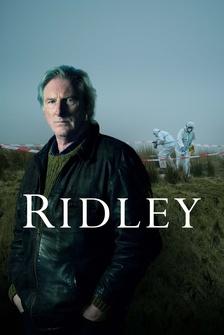In 2011, Tropical Storm Irene inundated 3500 homes and 20,000 acres of Vermont farmland.
Seven people in Vermont died.
Then in summer, 2023, another historic flood swept through the Green Mountain State.
This July flood was pretty devastating.
It certainly hasn't been a typical year.
Rainfall events are more intense.
And this is sort of representative of what we're seeing of our new norm.
The 2023 flooding caused more than $1,000,000,000 of damage to Vermont.
How can we protect our communities from this new norm?
One way is with floodplain maps.
They help us identify hazardous areas.
A lot of floodplain maps are made by the Federal Emergency Management Agency, FEMA.
If you have to have flood insurance for your home, it might be because one of these FEMA maps says you're at risk.
But many of those maps are based on outdated data that doesn't cover the entire state.
Those FEMA models are limited to very developed areas in our landscape.
And Vermont is very rural.
We need better floodplain maps because what goes on upstream affects how much water will flow into towns and cities.
Our presence on the land from early settlers landed on flood plains and we sort of confined the rivers like this rail bank.
And you can kind of see the rail line cut off the river.
We found that the more you can reconnect the rivers, the better.
If we identify where water has flowed on the landscape in the past then we can train computer models to predict where it will go in future floods.
Our emergency responses will be quicker, and we can restore natural floodplains to retain more water.
That water might kind of hang out for a longer period of time.
And that has an impact of decreasing flood levels downstream.
Researchers at the University of Vermont are building these models.
First, they go out to flood plains and collect data.
Oh, that water looks cold.
Rebecca Diehl and her team are monitoring around 25 flood plains in Vermont's Champlain Valley.
They collect a variety of measurements before and after floods.
They look for clues of flooding in the landscape.
So what do we see up here?
So this is rafting or debris from our most recent flood, really good indicator of high watermarks.
Pretty wild, that's about as tall as I am.
Yeah.
With these big flood events, it's actually fairly easy to identify the markings of where the water was and where it went.
Gee, that's almost up to the road.
At our sites, we also have sensors out that are capturing that information when we're not even out there.
Information on rainfall, soil moisture, temperature, on water levels in rivers.
This is the water level sensor.
Imagine the water is like above our heads here.
And what are you holding here?
I'm holding an RTK or an evalid system.
They use satellite data to pinpoint the exact location of high water marks.
It uses dozens and dozens of satellites to get a real precise measurement.
Meanwhile, machine learning expert Kristen Underwood and her students develop the computational models that predict where flood waters are likely to flow.
We have lots of data that we're collecting about these river systems, and I'm hopeful that we can harness that data to make better predictions.
Engineers like Roy Shiff use these models to figure out where to put a dam or which natural floodplains could be restored to most effectively protect populated areas.
They can play around with all different kinds of scenarios.
The beauty of these models is that you can take a dam out, put a dam in and take a bridge out, put a bridge in, change the structure, how water moves over or through these structures, and then just see how that water level changes.
Right now, his team is trying to figure out how to protect Vermont's state capital, Montpelier, by restoring floodplains along a river that flows into the city.
There's a threshold on the landscape that we need to get to where if a certain size flood comes, we're going to all be safe.
So we've actually made a proposal to do a couple stems of the river and then UVM can train their machine with the detailed model and then they'll extend it to the whole upper watershed.
If we could restore every possible floodplain up there, would it be enough?
Being in the business of predictions is tricky with the effects of climate change intensifying and adding unknowns to our future.
But these researchers are trying to figure out what's around the corner.
You know, I'm not going to sit here and pretend I can predict the future, but the best we can do in this type of work is to take the evidence we have and push it as far as we can so we can readily update these maps and that information can be back in the hands of the public really quickly.














